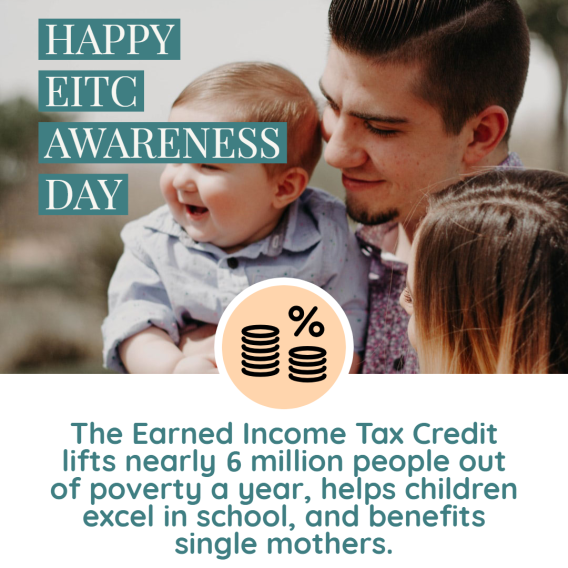
Partnering with local businesses that cater to lower- and moderate-income consumers can reach a wide range of customers and employees. Employers such as government agencies and nonprofit groups also have workers that often earn modest wages and could qualify for the Earned Income Tax Credit (EITC) and Child Tax Credit (CTC).
CONNECT WITH
- Merchants’ associations
- Trade groups
- Utility companies, department stores, family restaurants, and other local businesses
- Government agencies and local nonprofit organizations
- Business organizations that cater to lower- and moderate-income consumers
STRATEGIES
1. Show businesses that promoting tax credits helps stabilize the workforce and develop communities.
When employees have the money they need to take care of their families, they are more productive at work. The EITC and CTC are an economic development tool that puts more money into the pockets of community residents, who then can put more money back into local businesses.
2. Work with employers and managers to promote tax credits and free tax filing assistance to employees.
Employers can promote tax credits directly to employees by including tax credit information with paychecks, hanging posters in the workplace, and making information available through internal newsletters, employee resource lines, and intranet systems. Managers can incorporate information into employee manuals and training for new hires. Employers with many lower-wage employees can arrange to have Volunteer Income Tax Assistance (VITA) volunteers provide on-site tax preparation.

3. Help businesses share tax credit information with customers.
Businesses can display informational flyers in their windows, department stores can play announcements on public address systems, and family restaurants can print messages on tray liners or placemats. Encourage local business to participate in tax credit awareness through online methods, such as posting graphics on their website or social media.
4. Reach out to self-employed workers.
Some workers don’t realize they are self-employed and are unfamiliar with tax responsibilities, such as paying estimated self-employment taxes. Workers like Uber and Lyft drivers may not understand how to count income or track business expenses. Inform self-employed workers about educational tax resources. Direct rideshare drivers and free tax preparation volunteers to www.RideshareTaxHelp.com to learn about tax filing, record keeping, and making tax payments.







